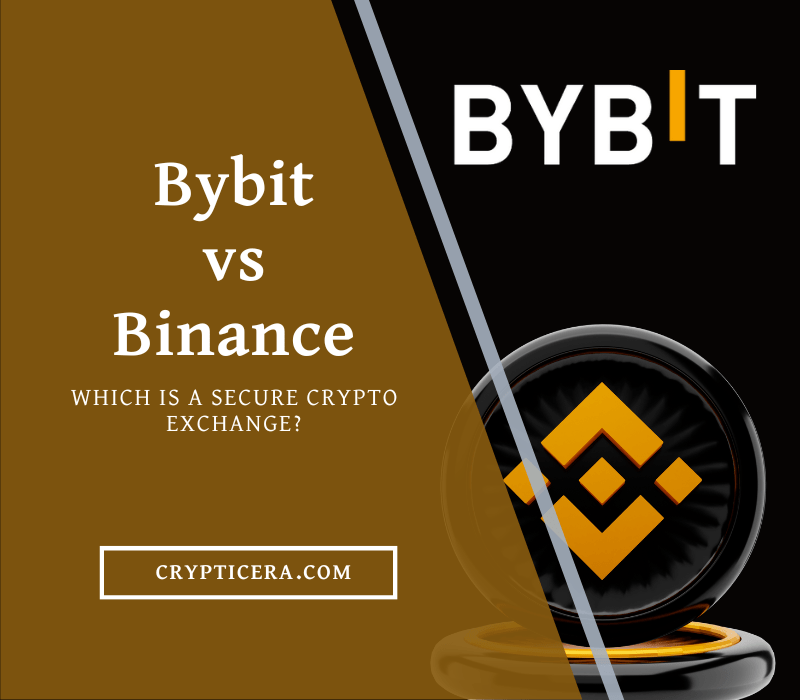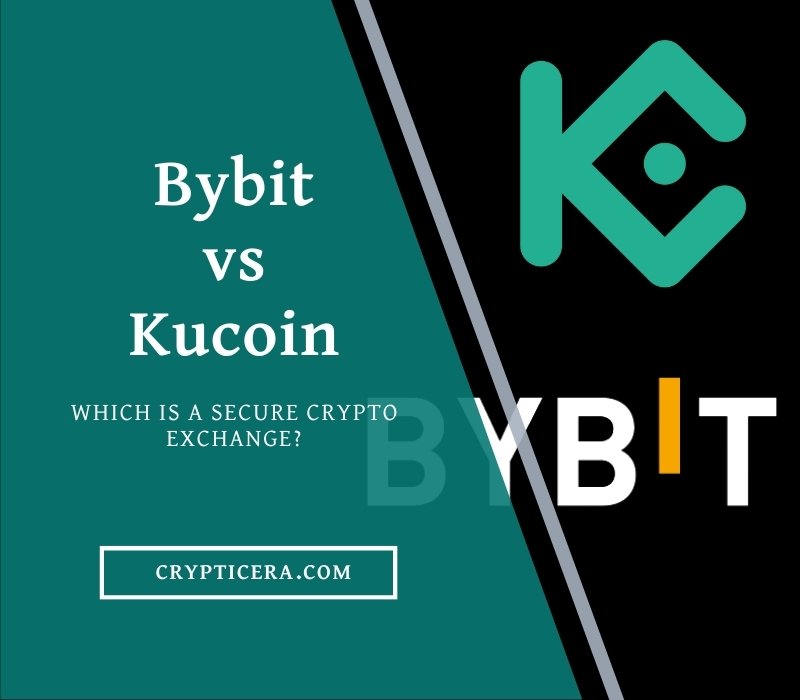As someone who has been involved in cryptocurrency trading for a while now, I have used various exchanges to buy and sell different digital currencies. Two exchanges that I have found to be quite popular are Bitfinex and Bitstamp.
Both of these exchanges have been around for some time and have a solid reputation in the industry. However, there are some significant differences between the two, and it’s worth looking at them to see which one might be a better fit for your needs.
In this blog post, I’ll be providing a detailed comparison of Bitfinex vs Bitstamp exchanges. I’ll be looking at several factors, including the user interface, trading fees, security features, supported cryptocurrencies, and overall reputation.
By the end of this post, you should have a better understanding of the differences between these two exchanges, and which one might be the better choice for you.
So, let’s dive in and look at Bitfinex and Bitstamp.
At a Glance 💡: Bitfinex has a more advanced trading interface with customizable features and offers more cryptocurrencies to trade. However, it has been associated with controversy in the past, and its user-friendliness can be a bit complex for beginners.
On the other hand, Bitstamp is a well-established exchange that is easy to use and highly regulated. However, it has limited coin offerings and lacks advanced trading tools like margin and futures trading.
Differences and Similarities between Bitfinex and Bitstamp
- Trading Platform Features: Spot and Futures, Margin Trading, Lending, Staking
- Trading Fees: 0.1% maker, 0.2% Taker Fees
- Number of cryptocurrencies supported: 183
- Security Features: Two-factor authentication, withdrawal address whitelist, anti-phishing code, IP whitelist, and security detection for withdrawals.
- Fiat Supported: USD, EUR, GBP, JPY
Pros
- User-friendly interface
- Wide range of trading pairs
- Strong security measures
- High liquidity
- Staking and Lending
Cons
- Controversial history and regulatory issues
- High trading fees
- History of security breaches.
- Trading Platform Features: Only Spot Trading
- Trading Fees: 0.3% maker, 0.4% Taker Fees
- Number of cryptocurrencies supported: 74
- Security Features: Two-factor authentication, cold wallet storage, IP whitelist, withdrawal address whitelist, and anti-phishing code.
- Fiat Supported: USD, EUR, GBP
Pros
- Highly Regulated
- Wide range of deposit methods
- High Security
- beginner-friendly Interface
- No deposit fees for digital assets
Cons
- Limited Fiat support
- High Fees
- No Margin and Leverage trading
- Limited supported cryptocurrencies
Bitfinex vs Bitstamp: The Crypto Exchange Comparison
| Key Points | Bitfinex | Bitstamp |
|---|---|---|
| Year Founded | 2012 | 2011 |
| Review and Ratings | -Safety and Security: 4/5 -Platform Fees: 3.5/5 -Features: 4/5 -Ease of Use: 3/5 | -Safety and Security: 4.5/5 -Platform Fees: 3/5 -Features: 3/5 -Ease of Use: 4/5 |
| Trading Fees | 0.1% – 0.2% | 0.1% – 0.5% |
| Supported Coins | 180+ (BTC, ETH, LTC, XRP, BCH, EOS, ETC, XMR, DASH) | 74+ (BTC, ETH, LTC, SOL, XLM, OMG, LINK, XTZ) |
| Fiat Currencies | USD, EUR, GBP, JPY | USD, EUR, GBP |
| Margin Trading | ✔️ | ❌ |
| Futures Trading | ✔️ | ❌ |
| Staking | ✔️ | ❌ |
| Lending and Borrowing | ✔️ | ❌ |
| Copy Trading | ❌ | ❌ |
| Grid Trading bots | ❌ | ❌ |
| Security Measures | Cold Storage, 2FA, IP Whitelisting, U2F | Cold Storage, 2FA, IP Whitelisting, PGP |
| Mobile App | ✔️ | ✔️ |
| API Access | ✔️ | ✔️ |
| Trading Interface | Advanced, Customizable | Simple, User-friendly |
| Customer Support | 24/7 Live Chat, Email Support | 24/7 Live Chat, Email Support |
| Trading Volume | High | Medium |
| User-Friendliness | Advanced, requires knowledge of trading | Simple, easy to use |
| Deposit Methods | Bank Transfer, credit/Debit cards, Apple pay, Crypto Transfer | Bank Transfer, SEPA, Crypto Transfer |
| Withdrawal Methods | Bank Transfer, Crypto Transfer | Bank Transfer, Crypto Transfer |
| Reputation | Controversial, associated with Tether | Trusted, well-established in the industry |
| Geographic Coverage | Global | Limited to Certain Countries |
| Compliance | KYC/AML Required | KYC/AML Required |
| Referral Program | Yes | Yes |
| Education | Trading Tutorials, Articles, Webinars | Trading Tutorials, Articles, Webinars |
Bitfinex Overview [History and Unknown Facts]
- Founding: Bitfinex Exchange was founded in 2012 by Raphael Nicolle, Giancarlo Devasini, and Philip Potter. It is based in Hong Kong and was initially created to enable trading between Bitcoin and US dollars.
- User base and trading volumes: Bitfinex is one of the oldest and most popular cryptocurrency exchanges in the world. As of 2021, it reportedly had over 1.5 million registered users and had processed more than $1 trillion in trading volume.
- Hack in 2016: In August 2016, Bitfinex suffered a major security breach in which 120,000 Bitcoins were stolen from its platform. The hack was one of the largest in cryptocurrency history, and the company had to implement various measures to recover from it, including repaying affected customers with IOUs.
- Partnership with Tether: Bitfinex has a close partnership with Tether, a stablecoin that is pegged to the US dollar. Bitfinex’s owners also hold a stake in Tether’s parent company. This relationship has been controversial at times, with critics questioning the stability and transparency of Tether.
- Lawsuit with New York Attorney General’s office: In 2019, Bitfinex was sued by the New York Attorney General’s office for allegedly covering up a loss of $850 million by using Tether’s reserves to fill the gap. Bitfinex and Tether have denied the allegations, and the case is ongoing.
Bitstamp Overview [History and Unknown Facts]
- Bitstamp was founded in Slovenia in 2011 by Nejc Kodrič and Damijan Merlak. At the time, it was one of the first cryptocurrency exchanges in Europe and the world.
- In 2014, Bitstamp became the first Bitcoin exchange to be granted a license by Luxembourg’s financial regulator, the Commission de Surveillance du Secteur Financier (CSSF). This gave the exchange a significant amount of legitimacy and helped it attract more users.
- In January 2015, Bitstamp suffered a major security breach that resulted in the theft of 19,000 Bitcoins, worth around $5 million at the time. Despite this setback, Bitstamp was able to recover and improve its security measures to prevent future breaches.
- In 2021, Bitstamp was acquired by NXMH, a subsidiary of South Korean conglomerate NXC Corp, for a reported $400 million. This acquisition was seen as a significant milestone for Bitstamp and a sign of the growing mainstream acceptance of cryptocurrencies.
Bitfinex vs Bitstamp: Key Features
Security
Both Bitfinex and Bitstamp have taken measures to ensure the security of their platforms and their users’ funds. Bitfinex employs a range of security measures, including cold storage, two-factor authentication (2FA), IP whitelisting, and Universal 2nd Factor (U2F) authentication. Bitstamp also uses cold storage, 2FA, IP whitelisting, and Pretty Good Privacy (PGP) encryption.
However, Bitstamp is known for having a more transparent approach to security. The exchange regularly publishes security audits and reports on its website, which is not something Bitfinex currently does.
Fees
In terms of fees, Bitstamp generally has lower trading fees compared to Bitfinex. Bitstamp’s fees range from 0.1% to 0.5% depending on the trading volume, while Bitfinex’s fees range from 0.1% to 0.2%. Bitfinex also charges higher fees for certain features, such as margin trading.
Both exchanges also have withdrawal fees, with Bitfinex charging higher fees for some cryptocurrencies. However, Bitfinex offers discounted trading fees for users who hold the exchange’s native token, UNUS SED LEO.
Platform Features
Bitfinex has a more advanced trading interface with customizable features, such as advanced charting tools, order types, and customizable API. Bitfinex also offers margin trading and futures trading, which Bitstamp does not.
Bitstamp, on the other hand, is known for its user-friendly platform, with a simple interface that is easy to navigate. Bitstamp also offers market analysis tools, such as order book depth charts and trading volume charts.
Supported Cryptocurrencies
Bitfinex supports a wider range of cryptocurrencies compared to Bitstamp. Bitfinex supports 183 cryptocurrencies and 402 trading pairs. Bitstamp offers trading of only popular digital assets with 74 coins and 160 trading pairs.
Payment Methods
Both exchanges offer bank transfers and cryptocurrency transfers as payment methods. Bitfinex also supports deposits and withdrawals via credit and debit cards, as well as some e-wallets.
Bitstamp, on the other hand, does not support credit or debit card payments, but it does support SEPA transfers for users in Europe.
Staking and Earn
Bitfinex offers staking for several coins, including Polkadot (DOT), Cosmos (ATOM), Tezos (XTZ), Algorand (ALGO), and V.Systems (VSYS). The staking APY on Bitfinex varies depending on the coin and market conditions, but it can range from around 5% to 15% or more.
Bitstamp only supports Algorand and Ethereum 2.0 with 1.6% and 4.5% APY respectively.
Final Thoughts: Which is better?
Bitfinex and Bitstamp are reputable cryptocurrency exchanges, each with its own strengths and weaknesses. Bitfinex is a more advanced exchange with more customizable features, a wider range of cryptocurrencies, and more payment options. However, it charges higher fees and has been associated with controversy in the past.
Bitstamp, on the other hand, has a more user-friendly platform, lower trading fees, and a transparent approach to security, but it lacks some advanced trading features and has a more limited range of supported cryptocurrencies.


